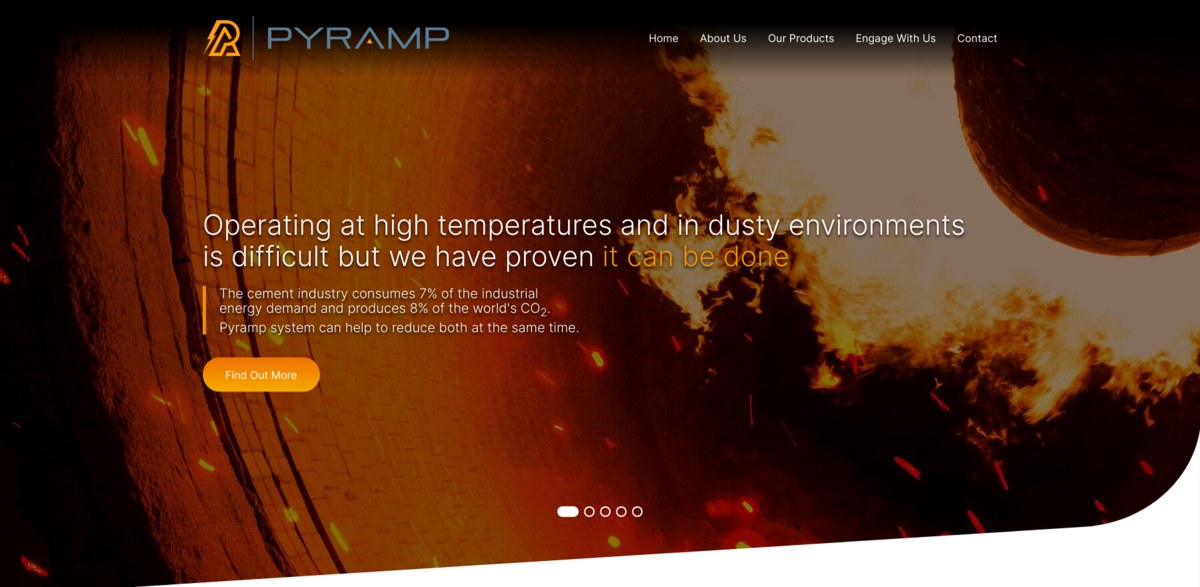What is Pyramp?
Welcome to Pyramp, a groundbreaking venture that sprang from research at the Technological University of Dublin, Ireland. This innovative project is all about transforming waste heat into electricity using cutting-edge thermophotovoltaic (TPV) technology. Pyramp offers a modular, low-maintenance solution tailored for high-temperature industries like cement, steel, glass, and ceramics. After some impressive industrial trials with world-leading companies in these sectors, Pyramp is gearing up for its seed/spinout funding round. The goal? To revolutionize energy efficiency and sustainability in industries that really need it.
The Main Benefit: Empowering Industries Through Waste Heat Recovery
Pyramp tackles a huge challenge—those “difficult to abate” emissions from high-temperature industrial processes. By converting industrial waste heat into electricity efficiently, Pyramp’s TPV technology offers a smart, sustainable edge. Here are some key figures and facts that highlight its impact:
- High-temperature process industries waste about 50% of their thermal energy as heat released into the environment.
- Cement, steel, and glass industries contribute roughly 20% of global CO2 emissions.
- If Pyramp succeeds in recovering waste heat from the world’s 3,400 cement, steel, and float glass plants, it could prevent 1,200 million tonnes of carbon emissions by 2050.
- A Pyramp panel packs around 50 times more energy density than any solar PV module.
- The waste heat recovery market is valued at approximately $60 billion per year and is growing at a rate of 9% annually.
The Technology Behind Pyramp
Born from a collaboration starting in 2019 and leveraging Iftekhar Hussain’s PhD research, Pyramp’s TPV technology is pretty fascinating. It converts infrared light into electricity, which means it’s designed to minimize heat absorption from hot gases—so it won’t steal energy from the processes industries care about. The modular design and patented spectrally selective emitter material give Pyramp a strategic advantage, especially in those tough, high-temperature environments.
How Durable and Efficient is Pyramp?
Wondering about resilience and lifespan? The TPV devices are built to last, with lifetimes comparable to photovoltaic cells—around 20 years—provided they’re installed in the right environment and designed to handle dust, corrosion, and temperature cycles. Efficiency and power density depend on factors like the heat source temperature and the device’s surroundings. For example, in cement plants, power density is expected to be about 4kW/m², while in glass production it can reach 12kW/m² or even higher. Steel plants show similar potential to glass.
Operating Temperature Range and Practical Considerations
TPV devices need a hot enough heat source to emit light, and the hotter the source, the better the efficiency. Generally, the system breaks even at around 1000°C, though this can be lower if the surrounding hot gases are cooler. Right now, the sweet spot for Pyramp’s technology is between 1000°C and 1600°C. So, it’s perfectly suited for the intense heat environments found in cement, steel, and glass manufacturing.
Project Impact: Sustainable Development Goals (SDGs) Linked to Pyramp
- SDG 7: Affordable and Clean Energy – by converting waste heat into usable electricity.
- SDG 9: Industry, Innovation, and Infrastructure – through pioneering TPV technology in heavy industries.
- SDG 12: Responsible Consumption and Production – by improving energy efficiency and reducing waste.
- SDG 13: Climate Action – by significantly cutting CO2 emissions from major industrial sectors.
- SDG 17: Partnerships for the Goals – through collaboration between academia and industry.
Leadership and Vision Driving Pyramp Forward
Pyramp’s leadership team is a powerhouse of expertise and innovation. Led by Iftekhar Hussain, with Pearse Coyle as Executive Chairman and Graham Buckley as CTO, the company benefits from a diverse and inclusive approach. Technical guidance from Prof. Brian Norton, a renowned photovoltaics expert and former President of TU Dublin, adds serious weight to the project’s development. Together, this team is steering Pyramp through its seed-phase with a clear focus on transforming the future of high-temperature industries.





















